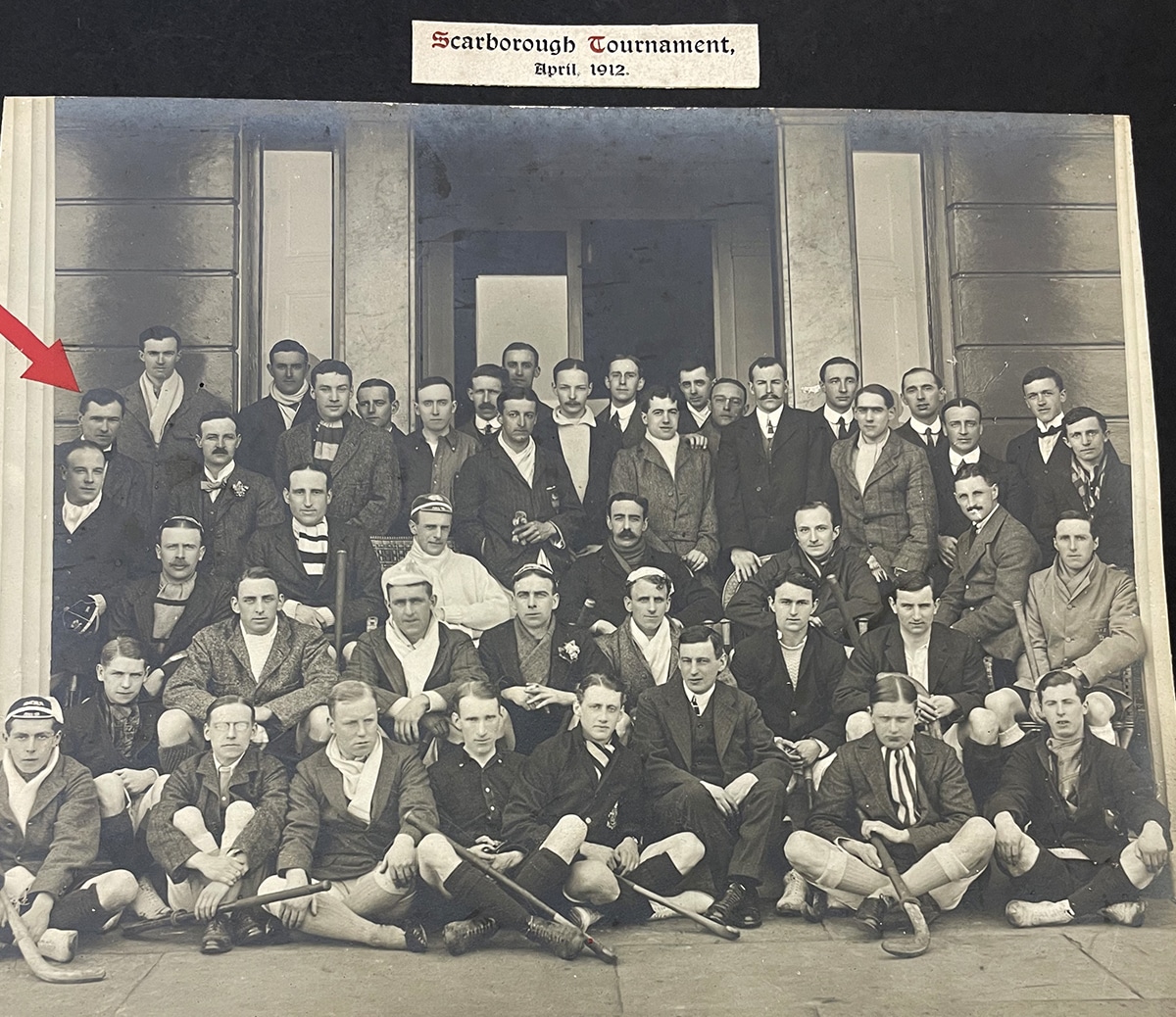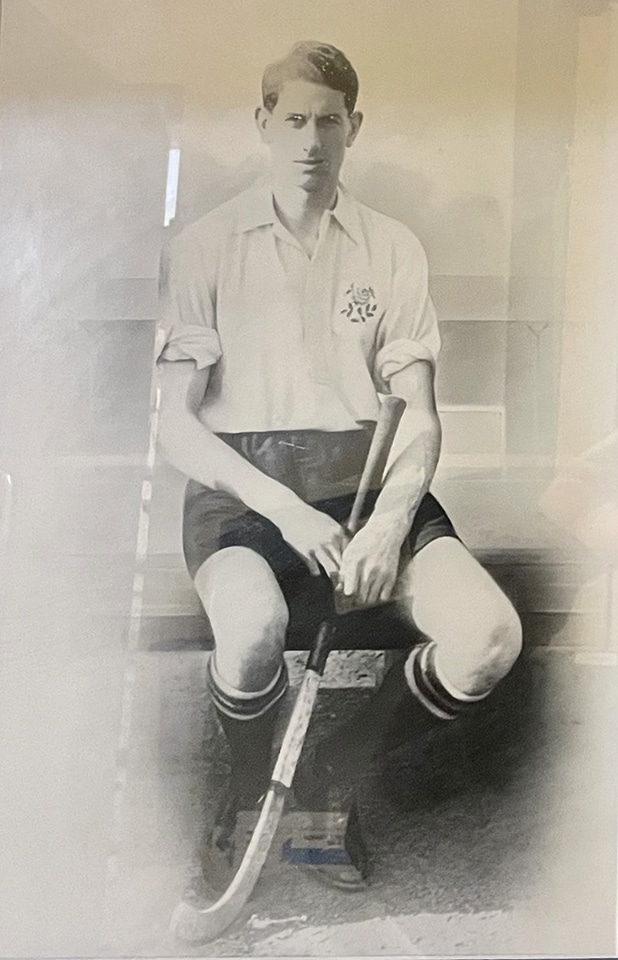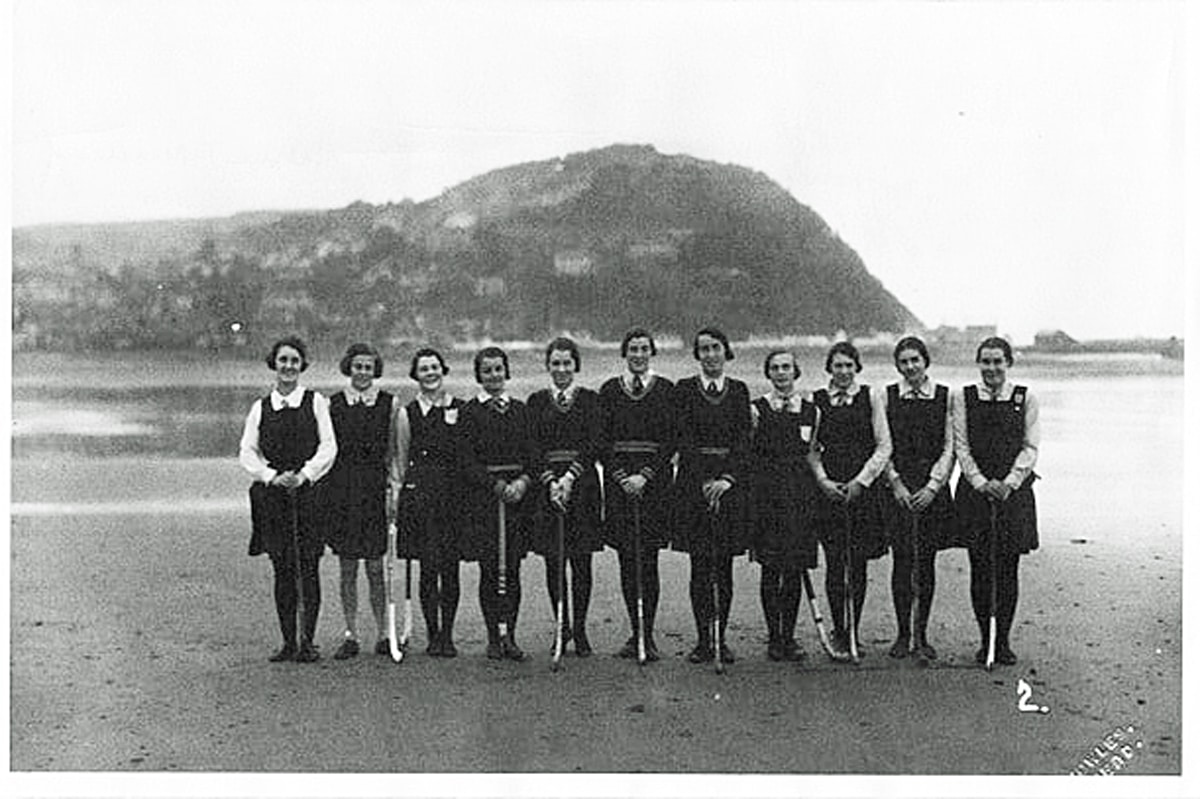Scarborough Easter Hockey Festival is generally recognised as the United Kingdom’s first hockey festival, however this assertion is difficult to verify. No newspaper reports of it in 1905 have come to light, yet we know that Easter hockey activity took place, whether a formal festival or a gathering of teams. The significant advantage of Scarborough’s location was that if the grass pitches were unfit for play, the adjacent beach could be used instead with a pitch marked out on the sand. Matches during the first two festivals are reported to have been played on Scarborough’s South Sands.
On its 75th anniversary in 1980, an excellent summary of the Scarborough Festival was written by Bob Stankiste and published in Hockey Sport magazine. Tucked away in the article was his comment that a festival history album had been complied by its former President Frank Harper and kept at Scarborough Library. Enquiries established that the album remained among the collection and as a rare source of material for The Hockey Museum’s (THM) festivals project, it was essential viewing. A successful 650-mile round trip was achieved by volunteer researcher Ian Smith at the third attempt: the Covid-19 pandemic prevented the first planned cross-country visit to Scarborough and closure of the Library between Christmas and the New Year put paid to the second. The album is a hefty rectangular bound volume donated on permanent loan by Frank Harper. It contains a summary of the Scarborough festivals for the first 70 years, listing the Festival headquarters, the grounds used, the numbers of participating teams, the organisers and in a later column the Festival Presidents. There is also a summary of the contribution of Charles W K Pfeiffer, the organiser of the first festivals until 1911, containing details that previously were not known.
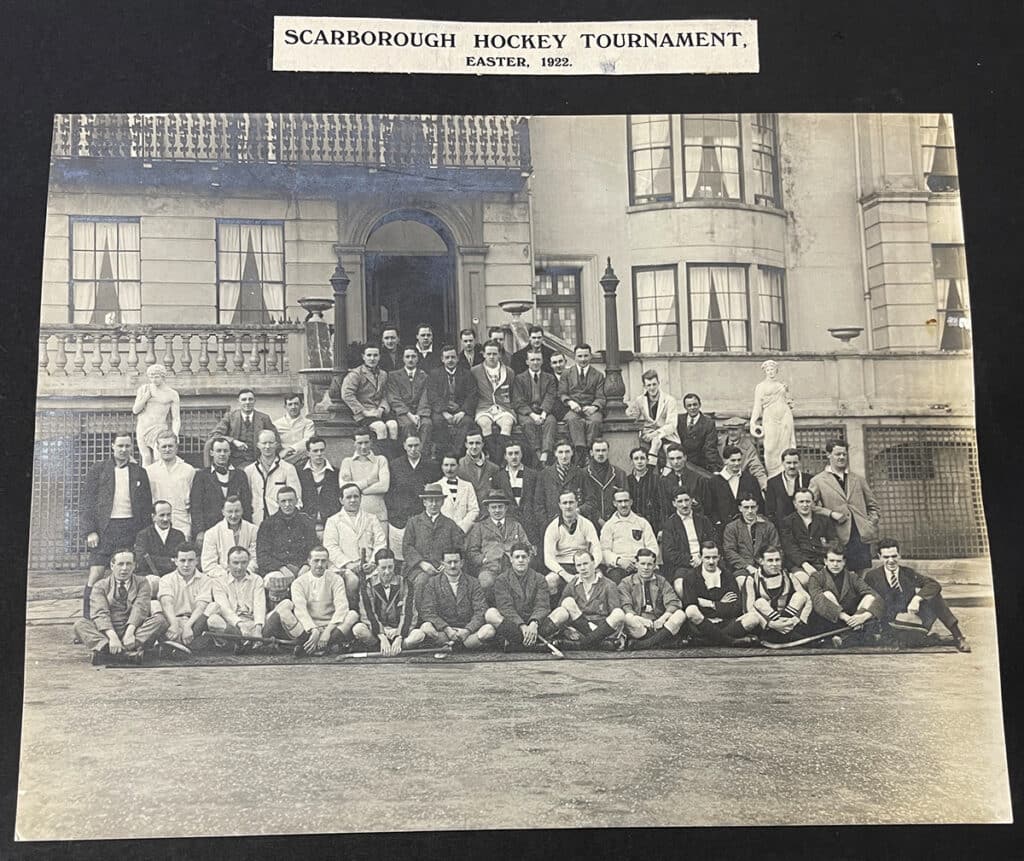
Scarborough Easter Festival attendees, 1922.
Images of the photograph album reproduced with kind permission of Scarborough Reference Library.
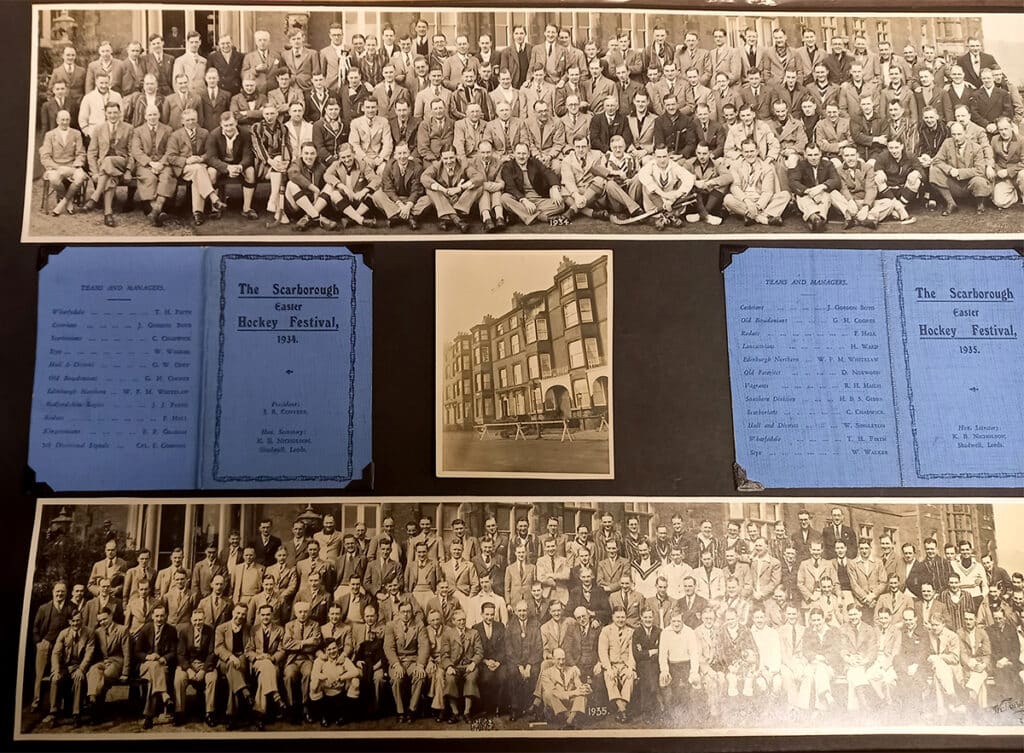
Scarborough Easter Festival attendees and fixture cards for 1934 and 1935.
Images of the photograph album reproduced with kind permission of Scarborough Reference Library.
Pfeiffer brought a Sheffield side to Scarborough at Easter in 1905. Prior to 1902 he was a member of Brondesbury Hockey Club which played on the Hammersmith Cricket Ground in West London. He played left half on several occasions for Middlesex County and was a committee member of Middlesex County Hockey Association. From 1902 until 1913, he represented the Sheffield District of the Yorkshire County Hockey Association. Apparently enthused by his festival experience, Pfeiffer joined Scarborough HC in October 1905, becoming Hon. Secretary for the 1906-07 hockey season. He resigned to become Hon. Secretary of the newly formed North Riding Hockey Club.
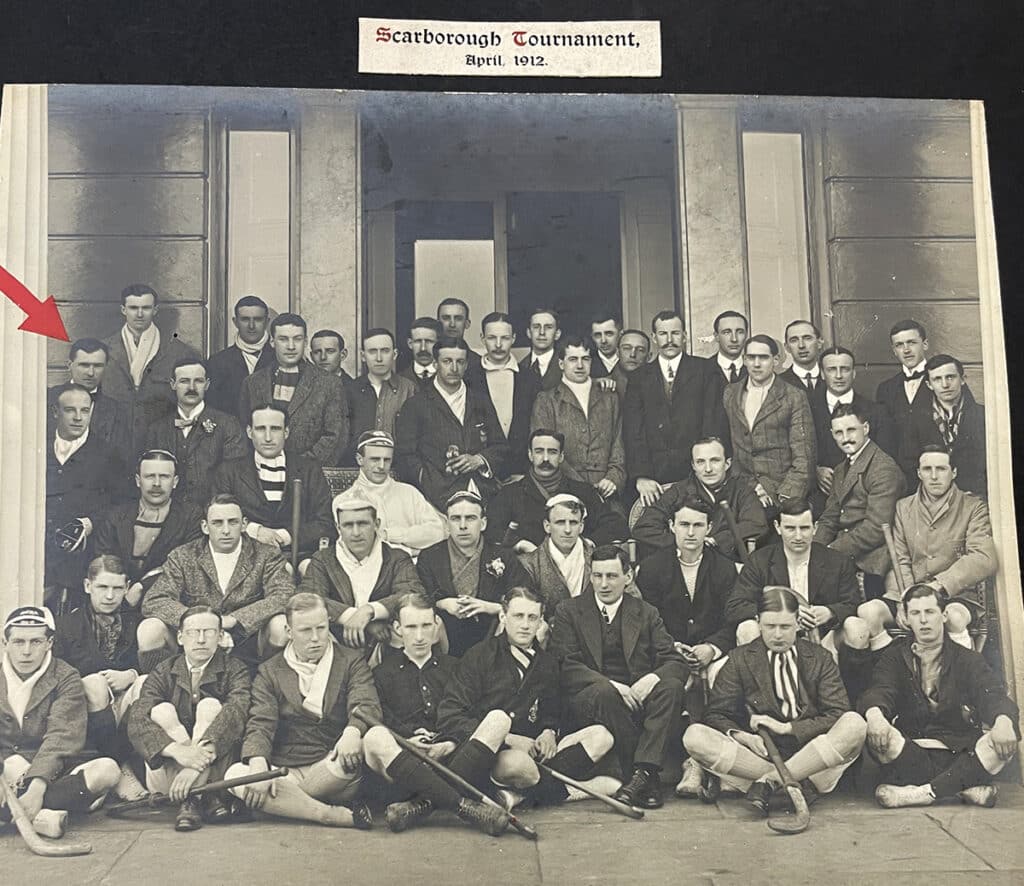
Participants at the Scarborough Easter Festival of 1912. Charles Pfeiffer is identified by the red arrow.
Images of the photograph album reproduced with kind permission of Scarborough Reference Library.
The Scarborough album reveals a festival predominantly featuring northern teams, particularly from Yorkshire but with later representation from the East Midlands, Cheshire and then Scotland. European visitors were relatively few but increased later. It contains early panoramic photographs of the participants, starting in 1912 as well as annual programmes, the first from 1924. The majority list the teams taking part in each festival (and usefully in many cases identifies the clubs which sent teams with obscure names). Later editions record the sequence of matches as well as tables, for Scarborough was, unusually for the amateur era, a festival where a winner was declared for both men and women’s competitions and later awarded a trophy.
Today, Scarborough Hockey Club continue to embrace their innovative hockey heritage by running an award-winning summer programme on the same South Sands beach as their forebears nearly 120 years ago. This summer (2024), they hit a record number of players and spectators with 50 attendees. Whilst a far cry from the heady days of up to 20 teams at Scarborough Festival, beach hockey remains alive and well in Scarborough!

The 2024 Scarborough Beach Hockey event run. Credit: Will Palmer.
The Hockey Festivals Project
The Scarborough Easter Festival research is part of THM’s hockey festivals project which is guided by the following principles:
- Festivals were an important and familiar part of the sport’s calendar during the 20th century, but these events are now largely extinct. It is highly unlikely that a complete list of hockey festivals will ever be compiled because of the sheer number of events and the lack of formal records etc. However, their historic importance justifies documentation of this information and the collection of associated heritage material.
- There is a finite window of opportunity to record information and acquire relevant material while those of the ‘festival generation’ are still with us.
Subsequently, the members of the project group are striving to compile a comprehensive list of events and welcome further information and material.
The group has recorded basic information for over 280 hockey festivals in Great Britain. This covers the name of the event, venue, organisers, dates of operation and time of year, duration of the event and the types of hockey played. Further information is being collated, such as lists of participating teams and results, media coverage and social events. It is regrettable that hockey does not benefit from the same thirst for statistics that cricket has enjoyed over the years. It makes research into hockey festivals more challenging.
The primary objective of the group has been to compile material for a book which captures the number and size of festivals when at their height in England. It aims to introduce the concept of hockey festivals to the uninitiated and to create a positively nostalgic presentation for past attendees. This book will attempt to cover most aspects of the hockey festival scene and include summaries of the more significant tournaments or events that took place, some of which have continued to the present day.

